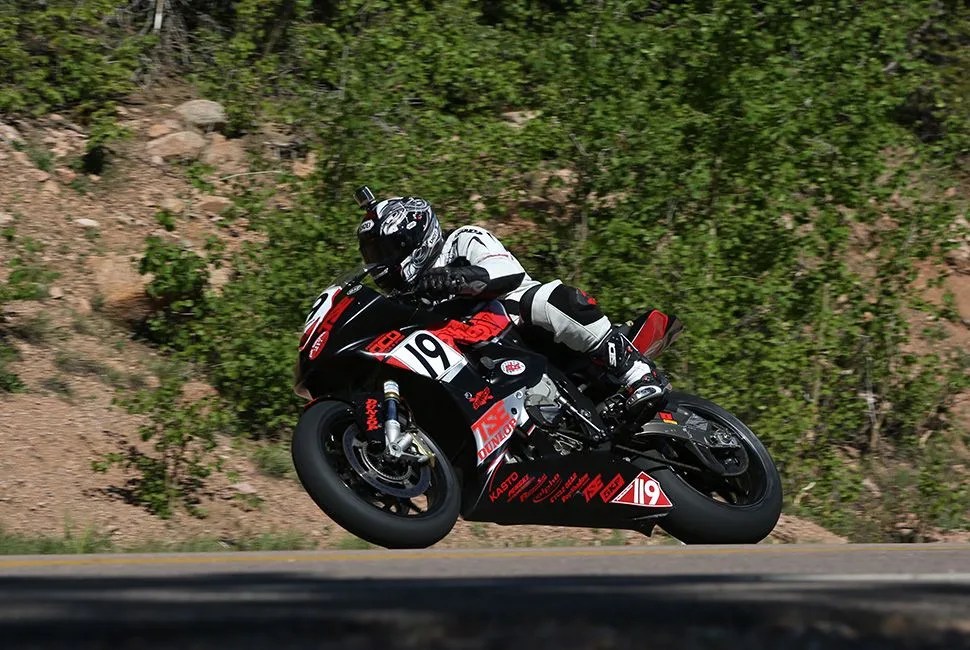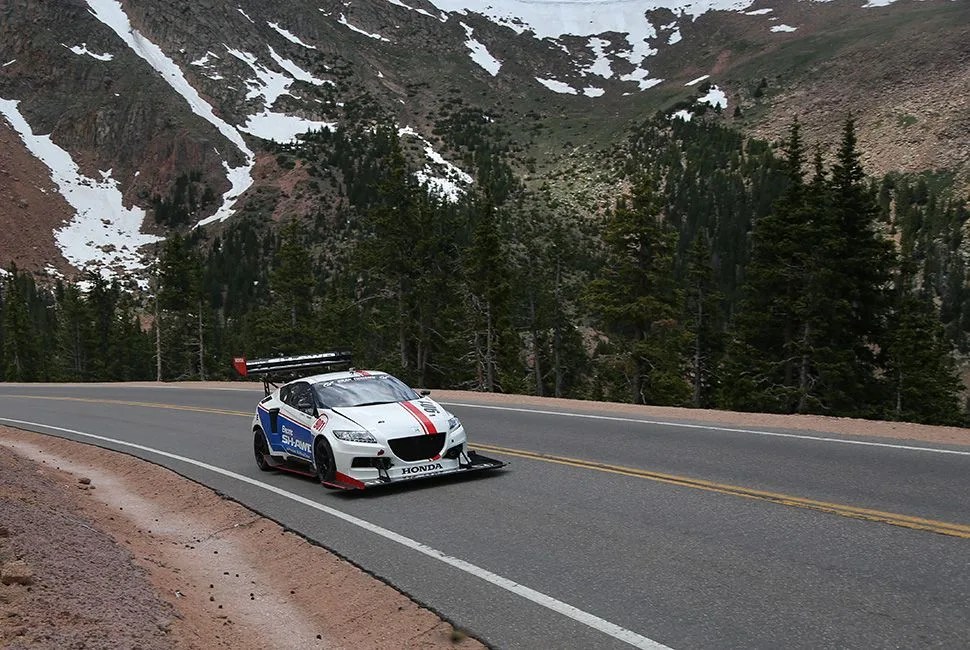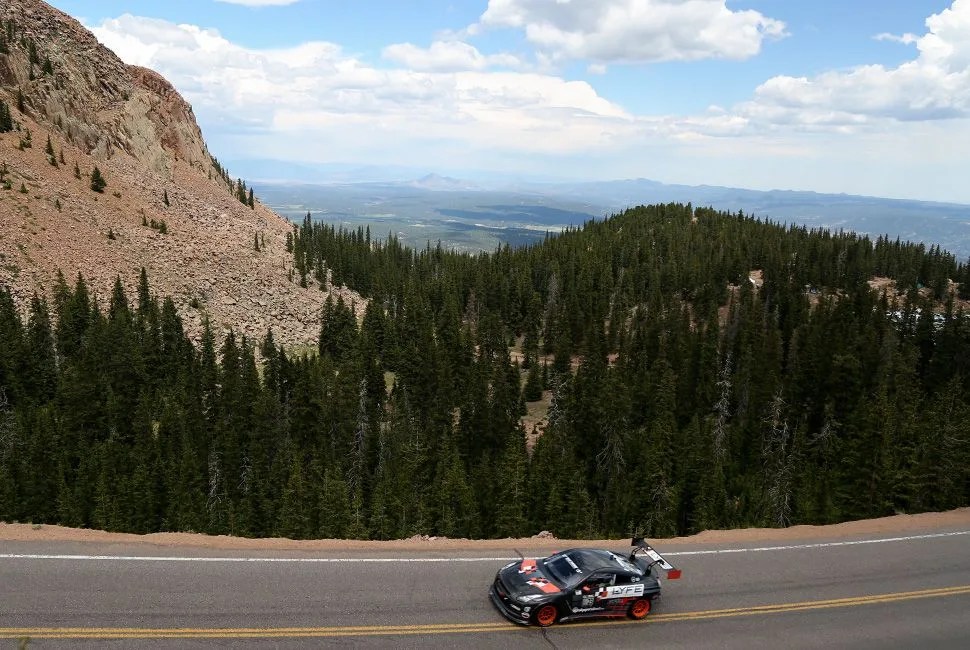17 photos
Idling at the starting line of Pikes Peak International Hill Climb, the only constant ahead of the drivers is the danger. Asphalt stretched around 156 turns over 12.4 miles, the road climbs over 4,700 feet to the peak, where the finish line sits at 14,110 feet above sea level. Road conditions, temperature, weather, the performance of the car — all change as racers climb higher. A dense forest lines the bottom half; the top half, above the tree line, opens to distant dramatic scenery that pulls racers towards 1,000-foot drops. It’s “driving on the edge” in every sense of the phrase.
At 99 years old, PPIHC is one of the oldest races in the world, second only to the Indy 500 and Isle of Man TT. And at this year’s running, history was made. Rhys Millen became the first driver to win the famed race in an all-electric race car at 9 minutes, 07.222 seconds. With the advancements in battery technology and the massive elevation change of Pikes Peak, it was bound to happen. As racers climb the mountain course, the air gets thinner, which is a problem for internal combustion engines, which need air to make power. The record is still held by Sebastien Loeb and his insane 875 horsepower turbocharged Peugeot 208 T16, but give it a couple years and his time of 8 minutes, 13.878 seconds will be eclipsed by battery power.
Cars from every era, motorcycles, sidecars, ATVs, and the occasional freightliner make their way up the mountain, seeking the fastest time. And since 2012, the course has been fully paved from start to finish, beckoning even more entrants. With more and more competitors flocking to the race every year, speeds rise and times fall. And the 1,000-foot cliff faces, they remain steadfast, pitting racers’ will to win against their own will to survive.
Adversity and Resilience with Project 156
Named after the 156 turns that make up the Pikes Peak International Hill Climb course, Project 156 is an effort between Victory Motorcycles, Roland Sands Design and Cycle World. Don Canet, the bike’s pilot, crashed a week before the race. A barrier saved him and the bike from heading off a cliff. Luckily, Canet was uninjured; the bike, however, was nearly unrecognizable. The team shipped it back to the shop, who rebuilt the entire bike and got it to the starting line just in time for the race. Canet and the bike went down again during the race, though this time he recovered and made it to the top. His time wasn’t quick enough to get on the podium, but Victory, Project 156 and Canet say they will be back at PPIHC in 2016.

















